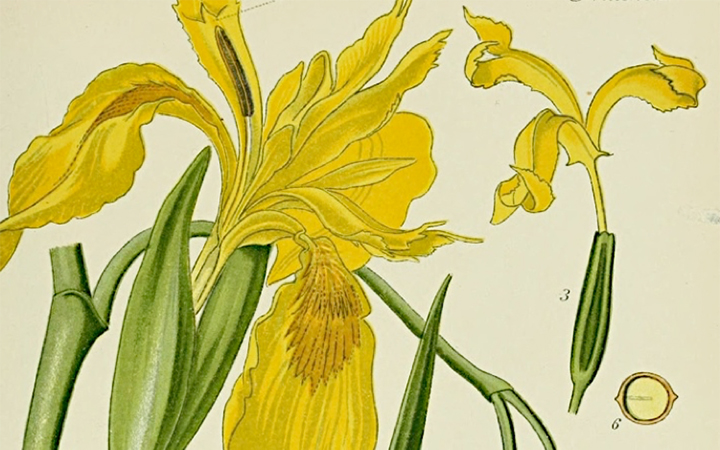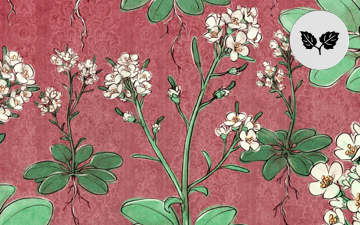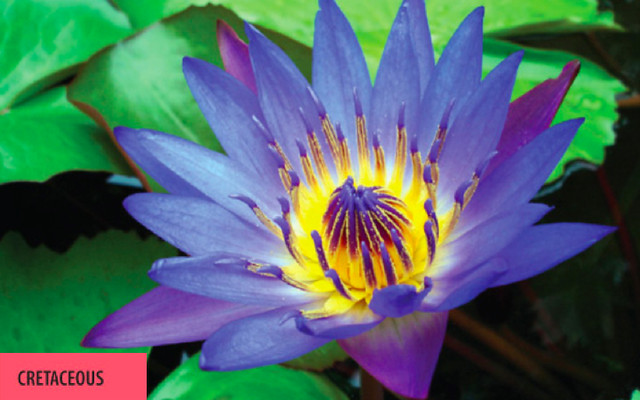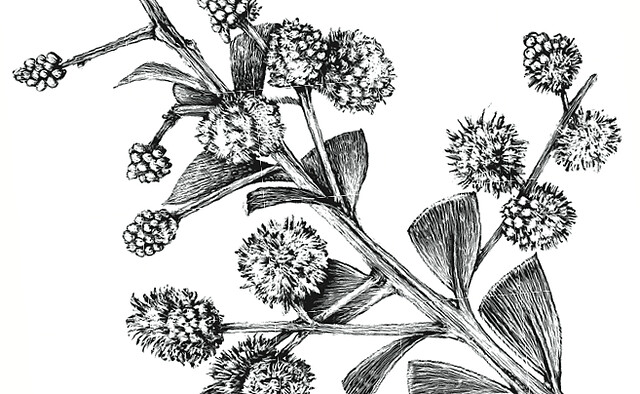Angiosperms

Woodland Strawberry
Fragaria vesca


Sorry, there is no photo available. If you have one, please submit
here
.
2 POINTS
Fact: It is also used as a genetic model plant for the garden strawberry and the Rosaceae family in general.
cool, warm
Graphic by O.W. Thome (1885)
Fragaria vesca, commonly called wild strawberry, woodland strawberry, Alpine strawberry, European strawberry, or fraise des bois, is a perennial herbaceous plant that grows naturally throughout much of theNorthern Hemisphere, and that produces edible fruits. Typical habitat is along trails and roadsides, embankments, hillsides, stone- and gravel-laid paths and roads, meadows, young woodlands, sparse forest, woodland […] read more

Yellow Iris
Iris pseudacorus


Sorry, there is no photo available. If you have one, please submit
here
.
2 POINTS
Fact: This plant has been used as a form of water treatment since it has the ability to take up heavy metals through its roots.
cool, warm
Graphic by O.W. Thome (1903)
Iris pseudacorus (yellow flag, yellow iris, water flag) is a species in the genus Iris, of the family Iridaceae. It is native to Europe, western Asia and northwest Africa. Its specific epithet, meaning “false acorus,” refers to the similarity of its leaves to those of Acorus calamus, as they have a prominently veined mid-rib and […] read more

Arabidopsis
Arabidopsis thaliana


Sorry, there is no photo available. If you have one, please submit
here
.
1 POINTS
This small flowering plant from the mustard family is an ideal model organism because of its short generation time, large yield, and small genome. It was the first plant to have it’s entire genome sequenced.
cool, warm
Graphic by Joe Wierengajoewierenga.com/
Arabidopsis (rockcress) is a genus in the family Brassicaceae. They are small flowering plants related to cabbageand mustard. This genus is of great interest since it contains thale cress (Arabidopsis thaliana), one of the model organisms used for studying plant biology and the first plant to have its entire genome sequenced. Changes in thale cress […] read more

Nymphaeales (Water Lily)
Nymphaeales order


Sorry, there is no photo available. If you have one, please submit
here
.
EXTANT | 1 POINT
Water lily fossils have been found from as early as the Cretaceous period.
cool, warm
Graphic by Sixtybolts (CC-BY-SA-2.0)www.amnh.org/
Nymphaeales is an order of flowering plants, consisting of three families of aquatic plants, the Hydatellaceae, the Cabombaceae, and the Nymphaeaceae (water lilies). It is one of the three orders of basal angiosperms, an early-diverging grade of flowering plants. At least 10 morphological characters unite the Nymphaeales.[2]Molecular synapomorphies are also known. The Plant List, created […] read more

Knife-leaf Wattle
Acacia cultriformis


Sorry, there is no photo available. If you have one, please submit
here
.
1 POINT
Fact: The flowers of Acacia cultriformis are safe for humans to eat.
cool, warm, hot
Graphic by O'Reillyanimals.oreilly.com/
Acacia cultriformis, known as the knife-leaf wattle, dogtooth wattle, half-moon wattle or golden-glow wattle, is a perennial tree or shrub of the genus Acacia native to Australia. It is widely cultivated, and has been found to have naturalised in Asia, Africa, North America, New Zealand and South America.[1] A. cultriformis grows to a height of […] read more

African Baobab
Adansonia digitata


Sorry, there is no photo available. If you have one, please submit
here
.
2 POINTS
Fact: Adansonia digitata‘s fruit is sometimes known as a superfruit.
warm, hot
Graphic by O'Reillyanimals.oreilly.com/
Adansonia digitata (baobab, Afrikaans: kremetart, Hausa: kuka, Sotho: seboi, Tswana: mowana, Tsonga:Ximuwu, Venda: muvhuyu, Arabic: tabladi)[1][2] is the most widespread of the Adansonia species on the African continent, found in the hot, dry savannahs of sub-Saharan Africa. It also grows, having spread secondary to cultivation, in populated areas. English common names for the baobab include […] read more